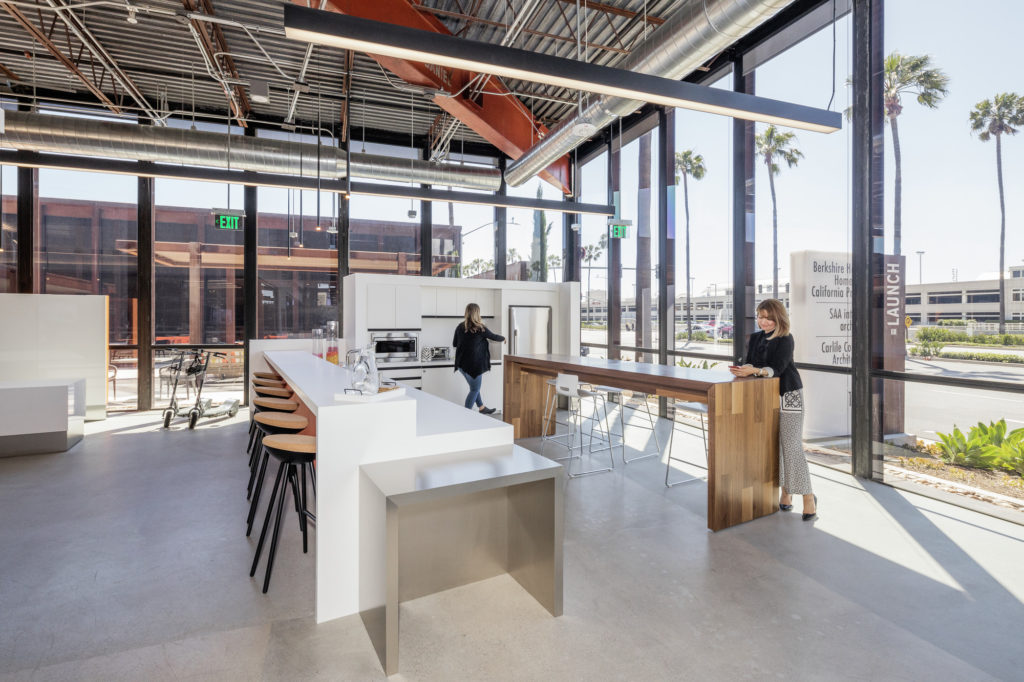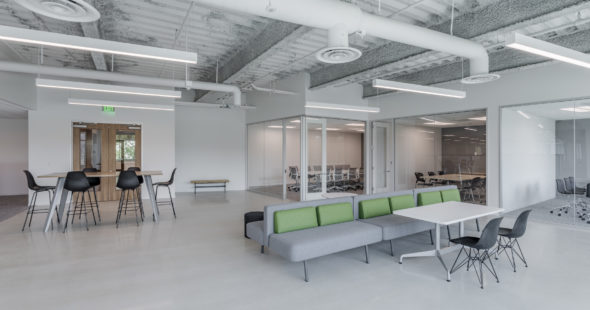A Real Estate Insider’s View on the Flex Market
Brian Brown, Senior Director and Head of Flex Workspace+ shares his perspective

A visionary product requires visionary leadership. Brian Brown, Senior Director and Head of Flex Workspace+ sits down to discuss his career, the business case for flexible workspace, and why flexible workspace has CFOs rethinking their real estate strategy.
How did you get started in commercial real estate and why did you shift into the flexible space market?
I’ve been working in commercial real estate since 2006, starting in the Bay Area. One experience that stands out is my time working with a large, Beijing-based developer building a 2.5 million SF project in downtown San Francisco, which is set to be the second tallest building in the city. That experience was eye opening. The landlord-tenant relationship felt true to those names: ”Lord” and “Tenant.” It was adversarial and made me start thinking about how real estate could be a more customer-driven product – Office as a Service – which ultimately led me to Irvine Company.
How is flexible workspace different from coworking?
Coworking is exactly that: you’re working next to another person who has nothing to do with your business, may not be in the same industry, and could even be a competitor. Flexible office space is office space in every sense of the word. The leasing and move-in time frames are just shorter and the space comes with essential services that companies needs: branding, technology and furniture. Our product, Flex Workspace+, is for companies who want private office space but don’t want the hassle. You can call your Flex provider and say, “This is what I need, this is how I work, when can I move in?”
Who is the ideal customer for flexible workspace?
One of the misconceptions about the flex space is that it only appeals to start ups; that’s simply not true.
Flexible office solutions are becoming a standard part of any company’s real estate strategy up and down the spectrum. If you’re a start up, flex space might be your whole portfolio. If you are IBM launching a new division or want to hedge against a fluctuating head count, flex can be invaluable. It’s just going to be a smaller piece of the portfolio.
Does a traditional lease still make sense with such excellent flexible options available?
Traditional leases still make all the sense in the world for certain groups or for certain pieces of the portfolio. Flex is a perfect complement to traditional leases. Anytime you don’t have more than four years of visibility into your future space needs, flex space is an incredible value proposition.

Why four years?
Companies commit to a five to 10 year lease when they really have just two years of visibility. Data shows that this long-term commitment becomes problematic around year four. Companies end up either under-utilizing the space and paying for more than they need, or needing more space. Moving means they take a hit on sublease fees, eat the unamortized portion of the furniture costs, and incur all of those costs again in a new space. Those companies are better off with a flexible solution where the move costs nothing.
What do you think makes Irvine Company’s product distinctive from some of the other offerings in the market?
There are no other companies doing what we’re doing anywhere near the scale. We have a breadth of offerings all across Orange County, Los Angeles, Silicon Valley, San Diego, and Chicago, so customers can move into a Flex Workspace+ space, knowing that as their needs change, whether they’re up, down, or just needing to be in a different location, they’ll still have a solution in Irvine Company.
We can turn around flexible workspace in 30 days, which is something that currently doesn’t exist anywhere else in the world. A 30-day space that’s tailored to a customer is unprecedented.
What has surprised you most about the flexible workspace market?
What I’ve been surprised by is how quickly this has been adopted. In the last two years, the acceleration of the acceptance by enterprise companies blew me away. Originally, I thought this will appeal to users that are just forming a business. But the truth is that global corporations are the ones driving the growth. They’re investigating this as a real estate strategy and then they’re following through and executing deals.
Hardworking space without the hard work. Learn how Flex Workspace+ is changing the rules for office space and commercial leasing: FlexWorkspacePlus.com





